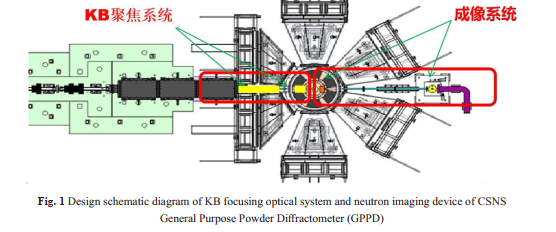Advanced neutron diffraction and imaging high-throughput characterization technology based on China Spallation Neutron Source General Purpose Powder Diffractometer
Lunhua He
1Institute of Physics, Chinese Academy of Sciences, Beijing, 100190
2Spallation Neutron Source Science Center, Dongguan, 523803
EXTENDED ABSTRACT: The General Purpose Powder Diffractometer (GPPD) is one of the first three spectrometers built by China's Spallation Neutron Source (CSNS). It is mainly used to study the crystal structure and magnetic structure of substances to meet the requirements of the needs of scientific research and industrial applications in many fields such as materials science, nanoscience, condensed matter physics and chemistry. Since September 2018, GPPD has been officially opened to users. Up to now, GPPD has successfully completed more than 100 user research projects, with more than 10,000 operating hours. The users of GPPD have achieved important experimental results in many research fields, including steel, magnetic materials, energy materials, and functional materials. In just three years of commissioning and operation, more than 50 SCI research papers, including Science, Nature Communications, Advanced Materials, etc。
With the development of science, material genetic engineering has raised the need for high-throughput characterization. Targeted research and development of technological devices that match the advanced neutron source, fully tap the potential of large scientific devices in high-throughput characterization, and give play to the strong complementarity between the advanced neutron source and other light source characterization capabilities to form a more comprehensive characterization platform. This is of special significance for China to build a world-leading high-throughput experimental platform based on large scientific devices. We developed the neutron beam KB focusing technology to optimize the focus Components, realize millimeter-level beam spot, increase the neutron flux at the sample, and greatly shorten the characterization time. We have also developed a neutron imaging system and completed the first Bragg-edge neutron imaging experiment in China, enabling the diffraction platform to have imaging capabilities and achieve micron-level spatial resolution. Without changing the structure of the spectrometer, GPPD was transformed into a high-throughput characterization experimental station suitable for combined material samples, making it the first spectrometer with diffraction + imaging mode, as shown in Figure 1. This provides new methods, new technologies, and new devices for conducting small-scale sample scattering experiments based on existing neutron sources, expands the application scope of advanced neutron sources such as CSNS, and supports the development of relevant cutting-edge scientific research in China。


Lunhua He is a professor and doctoral supervisor at the Institute of Physics, Chinese Academy of Sciences. She received her Ph.D. from the Institute of Physics, Chinese Academy of Sciences in 2002, and carried out post-doctoral research in the Department of Physics, Fudan University, Shanghai from 2002 to 2004. Her postdoctoral advisor is Academician Ruibao Tao. After leaving the station in 2004, she joined the Institute of Physics, Chinese Academy of Sciences. While conducting scientific research, she participated in an important directional project of the Knowledge Innovation Project of the Chinese Academy of Sciences: "Innovative research on the key technologies of the spallation neutron source on a multidisciplinary platform". After investigating the world's spallation neutron sources and determining the selection of the spectrometer, she researched the key technologies of the spectrometer. From 2005 to 2011, she participated full-time in the national science and technology infrastructure project "China Spallation Neutron Source Design and Prefabrication", shifting from scientific research to engineering construction. Since 2011, she has participated in the national science and technology infrastructure project "China Spallation Neutron Source Design and Construction". Currently, she is the head of the General Purpose Powder Diffractometer (GPPD) of China's Spallation Neutron Source (CSNS), and is responsible for the design, construction, debugging and operation of GPPD. GPPD is a powerful tool for designing and developing new materials, and has extremely broad application prospects in high-end fields such as new energy and new materials. At present, GPPD has been open for three years, and it has been highly praised by domestic and foreign counterparts. Preliminary experiments have shown that its design is reasonable and its performance is excellent. The research direction of GPPD in the past five years is mainly to use neutron diffraction technology to carry out research on the structure and performance of advanced materials, especially magnetic functional materials.